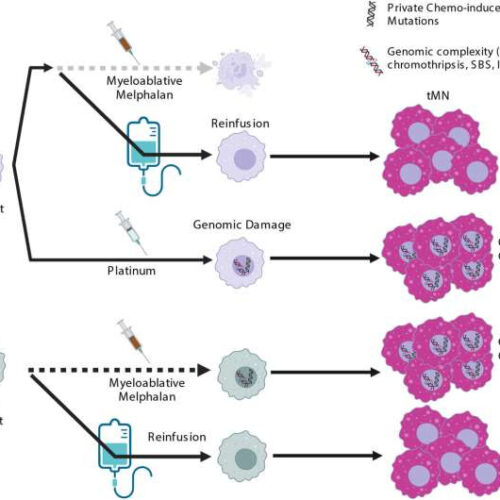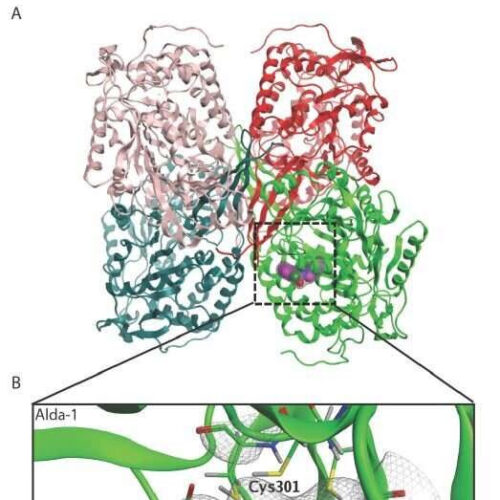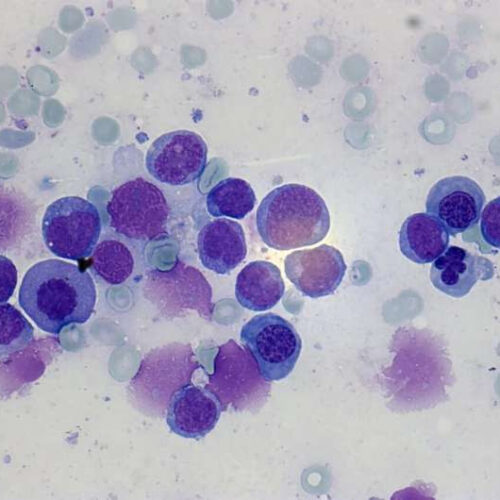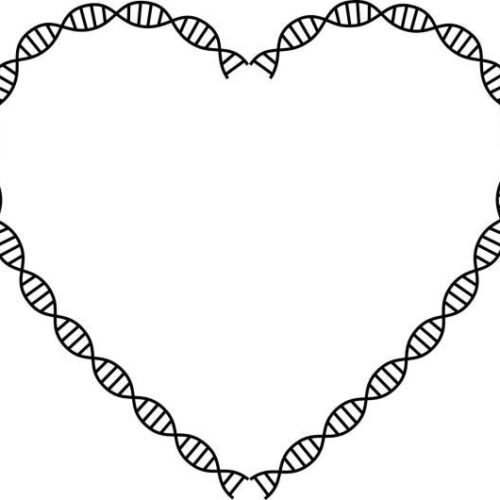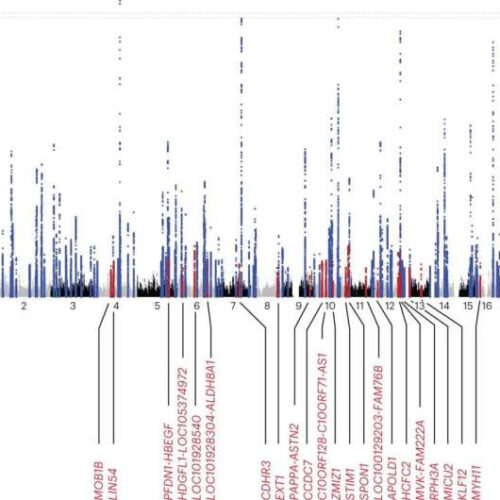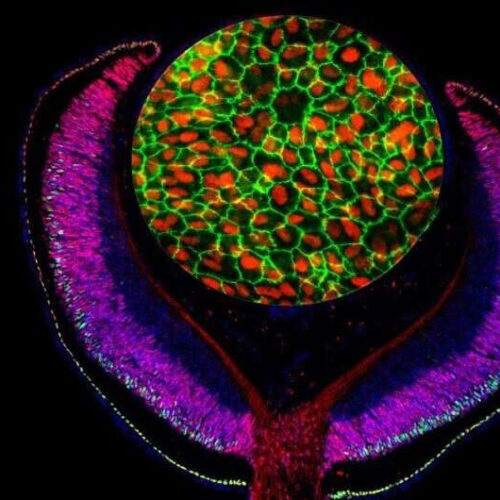by Sylvester Comprehensive Cancer Center Credit: Blood (2022). DOI: 10.1182/blood-2022-158992 Scientists at Sylvester Comprehensive Cancer Center at the University of Miami Miller School of Medicine have illuminated how treatments for multiple myeloma and other aggressive blood cancers can lead to future malignancies, called therapy-related myeloid neoplasms (tMNs). These findings from Sylvester’s Myeloma Research Institute highlight the importance of fully...
Category: <span>Genetics</span>
SGLT2 inhibitor found to reduce endothelial dysfunction associated with ALDH2 alcohol face flushing variant
by Bob Yirka, Medical Xpress A model showing Alda-1 bound to ALDH2, with the catalytic tunnel of ALDH2 enlarged (B). Credit: H. Guo, et al., Science Translational Medicine (2023) A team of researchers at Stanford University working with two colleagues from Greenstone Biosciences has found that an SGLT2 inhibitor can reduce endothelial dysfunction commonly associated with the ALDH2 alcohol...
New insights into the genetic basis of leukemia
by Kiel University In AML, an early precursor of the so-called myeloid cells degenerates; these so-called blasts (in purple, 63x magnification) subsequently multiply uncontrollably. Credit: Dr. med. Lars Fransecky, UKSH Acute myeloid leukemia (AML) is a malignant disease of the hematopoietic system that originates from immature precursors of red blood cells, platelets and part of...
Anti-aging gene shown to rewind heart age by ten years
by University of Bristol Credit: Pixabay/CC0 Public Domain An anti-aging gene discovered in a population of centenarians has been shown to rewind the heart’s biological age by 10 years. The breakthrough, published in Cardiovascular Research and led by scientists at the University of Bristol and the MultiMedica Group in Italy, offers a potential target for...
Study reveals new genetic disorder that causes susceptibility to opportunistic infections
by Vanderbilt University Medical Center Identification of a unique heterozygous mutation in the IRF4 gene in seven CID patients. Credit: Science Immunology (2023). DOI: 10.1126/sciimmunol.ade7953 An international consortium co-led by Vanderbilt University Medical Center immunogeneticist Rubén Martínez-Barricarte, Ph.D., has discovered a new genetic disorder that causes immunodeficiency and profound susceptibility to opportunistic infections including a life-threatening fungal pneumonia....
Defects in mitotic and telomere function increase risk for sarcomas
AMERICAN ASSOCIATION FOR THE ADVANCEMENT OF SCIENCE (AAAS) Heritable pathogenic defects in genes related to mitosis and telomere function may specifically increase the risk for sarcomas – rare cancers that develop in muscles, bones, and other connective tissues, researchers report. The findings provide new biological insight into sarcoma development and could inform better genetic risk profiles for...
Expanding gene therapy for rare disease that causes blindness
UNIVERSITY OF HOUSTON IMAGE: MUNA NAASH, UNIVERSITY OF HOUSTON JOHN S. DUNN ENDOWED PROFESSOR OF BIOMEDICAL ENGINEERING, IS EXPANDING A METHOD OF GENE THERAPY WITH THE HOPES IT WILL RESTORE VISION LOSS IN USHER SYNDROME TYPE 2A. CREDIT: UNIVERSITY OF HOUSTON A University of Houston researcher is expanding a method of gene therapy with the...
The best genetic predictors of heart arrhythmia and hidden comorbidity
by RIKEN Manhattan plot for the cross-ancestry meta-analysis. The results of the cross-ancestry meta-analysis (77,690 AF cases and 1,167,040 controls) are shown. The log10 BFs on the y axis are shown against the genomic positions (hg19) on the x axis. Association signals that reached a genome-wide significance level (log10 BF > 6) are shown in blue if previously reported...
Combining multiple maps reveals new genetic risk factors for blindness
by Public Library of Science Composite of an embryonic mouse eye cup (E14.5) labeled with antibodies against the developmental transcription factors Lhx2 (red) and Otx2 (green), and cultured human retinal pigmented epithelium (RPE) labeled with antibodies against MITF (red) and ZO-1 (green). Credit: Mazal Cohen-Gulkar, composite by Ruth Ashery-Padan (CC-BY 4.0, https://creativecommons.org/licenses/by/4.0/) Combining a map of...
Basic research opens up new therapeutic opportunities for fighting leukemia
by University of Veterinary Medicine—Vienna Genome-wide CRISPR/Cas9-based loss-of-function screen identifies genetic dependencies of STAT3Y640F-driven cells a) Schematic illustration of a competitive proliferation assay. b) Competitive proliferation assays of clonal Cas9-expressing STATY640F-driven HPC7 or c) clonal Cas9-HPC7 empty vector cells expressing IRF670 and sgRNAs targeting either Myb (positive control) or the Rosa26 locus (negative control). d)...

